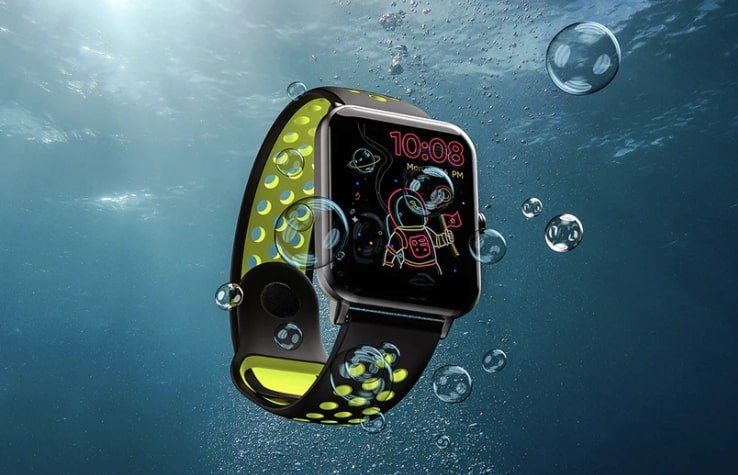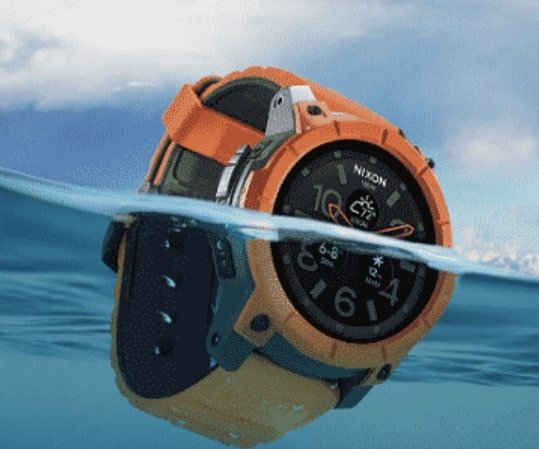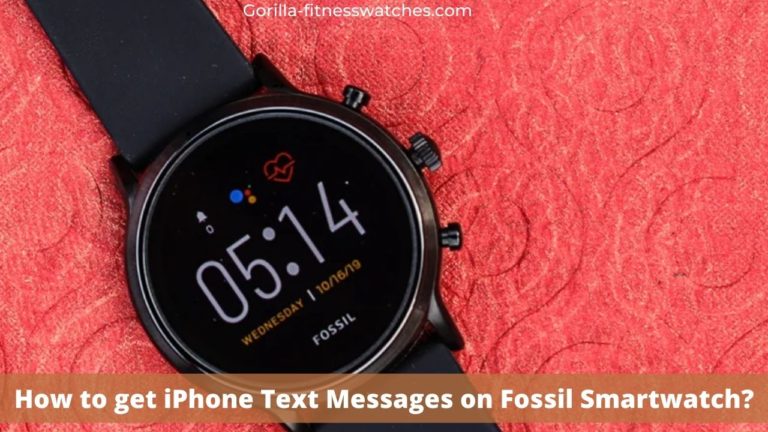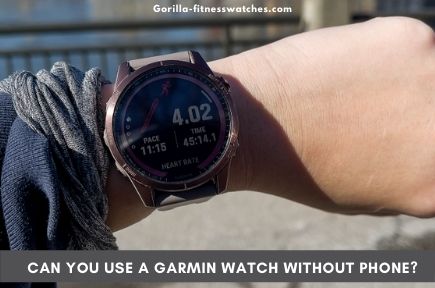How Do You Get Water Out of a Smartwatch?
When water gets into the smartwatch, then it leaves dampness and fogginess under the screen. And it’s very frustrating to see the foggy dial of the smartwatch.
The question here is, why is there moisture within the watch? Moreover, what would you do to remove moisture and water from your smartwatch?
Moisture in a watch is troubling, whether water resistant or not. It condenses within the watch due to moisture exposure, excessive humidity, sweat, or if the dial is cracked or loose. These elements lead to fogginess inside your watch, resulting in various faults.
If you’re looking for ways to remove moisture from a watch, you should read this post since it outlines all feasible and accurate methods to help you!
How Do You Get Water Out of a Smartwatch?

Dealing with a foggy watch isn’t tough; here are some simple treatments for getting the most out of a watch;
1- Use Silica Gel
Silica gel is a porous component and the best moisture absorbent, and it comes with new gadgets or smartwatch packaging. It absorbs and releases moisture, implying that water molecules are linked to the silica gel’s surface.
Place your smartwatch in a jar full of silica gel and allow it to sit in a jar for at least 48 hours. The dehumidifying characteristics of the gel will allow all moisture to escape from your watch.
2- Ripe Rice
According to reports, instant or uncooked rice is more efficient in absorbing the water droplets off your wristwatch. Professionals have utilized rice to preserve different equipment from a damp environment, including smartphones and smartwatches.
Remove the crown from your watch and immerse it in a small container filled with ripe rice. Leave it for a night or two to remove all the fogginess from your watch.
When the water is removed, it will function correctly. After a certain period, remove your watch from the rice jar and inspect the watch’s face for dampness.
3- Thermal Defogging
On warmer days, use direct sunlight. This will help to evaporate moisture and defog your watch.
This may be accomplished by disassembling the watch’s internal workings and drying them off.
Remove your smartwatch’s casing, gears, and any other components first, and keep all of the components in their proper places in a sunny location. After an hour or two, the water should have drained out. Assemble all the pieces, reattach the watch’s cover, and it will be back in working condition.
4- Drying With a Blow Dryer
Using a hair dryer to remove water from your smartwatch is a fantastic suggestion since it will remove all the moisture.
However, when using heat to dry a watch, be cautious since too much heat might harm the inner workings, leaving you with a bigger problem than just how to remove water from your moist watch.
5- Take Your Watch to a Professional
If the above strategies do not correct your watch or you do not know how to open it properly, simply take it to a watch repair shop. This is the most convenient and straightforward method for removing water condensation from your watch.
The watch master knows every detail about it and can repair it without causing any damage.
6- Turn on the Water Lock Mode
Water lock is a feature of smartwatches such as Apple’s and Galaxy’s that uses the watch’s speakers to eject water that has entered the watch. This is caused by vibration from speakers, which allows water droplets to drag out.
When you wear your smartwatch underwater, activate the water lock button on the display.
In few smartwatches Water lock mode activate automatically when you begin a water-based workout or aerobics like swimming or surfing.
When you’re finished, turn the digital crown on the side of your smartwatch to clear water from your watch’s speaker. Several tones are played to clear water by vibration that remains in your speaker.
What Happens if Water Gets Into Your Smartwatch?

Water can enter your smartwatch through various means, including accidental submersion or thermal changes. Whatever the cause, it has the potential to harm your smartwatch.
When water enters the crystals of your smartwatch, it begins to malfunction. It may stop working, run slowly, lose its water resistance, or be unable to detect your vitals, such as blood pressure, oxygen saturation, etc.
Similarly, if water stays in smartwatch for long time then it might cause major components to rust.
Suppose you have been submerged for an extended period, and the lumes on the hands and dial markers have mysteriously stopped glowing in the dark. In that case, this could indicate water seeping into these features and destroying them.
Water in the port of your smartwatch may degrade the performance of the speaker or microphone until it completely evaporates.
These potential consequences of getting water inside your smartwatch, so use caution when submerged. If you have a waterproof watch that is not completely water resistant, it will almost certainly cause damage to it because the watch loses its water resistance as it ages.
Why Does Your Watch Have Condensation?

What if you forgot to take off your watch while swimming or doing heavy activities? It causes condensation inside your smartwatch.
Condensation is the moisture or water drop accumulation inside your smartwatch due to humidity. This fogginess develops due to many sources:
1- Your Watch Face is Cracked
Sapphire screens are more brittle, so they crack easier when hit by a hard item, a break in the watch’s crystal glass might allow cold air and humidity to enter fast. They can then liquefy, causing moisture to form, and damaging your watch usage.
2- Crown is Not Closed Properly
The water-resistant seal has deteriorated over time, or the glass has developed a little fracture, for this watch loosened its stiffness and became foggy.
3- Temperature Difference
Walking from sharply freezing outside temps into cozy inside can often cause droplets to build on your watch face in the winter.
4- Gaps Around Watch Winders
When the automatic winding watch is not worn, the pivot point is wrapped, which keeps the watch operating. However, the lubricants in your smartwatch dry out due to its age and temperature. The continual winding, on the other hand, creates some tears.
5- Your Watch Isn’t Water Resistant
Some watches are not water-resistant at all, allowing condensation to build more easily when such watches are put into water and not handled promptly, moisture forms inside them.
6- Worn Out Gasket
The watch’s silicon gasket O-ring provides a tight seal around the crown, preventing water infiltration. As these watches lose their resistance over time, the rubber gasket might wear down and lose its capacity to keep out water. As a result, water gets into the watch dial.
These are the culprits that allow moisture to enter your watch, causing it to have a mechanical fault. Water impacting only one combatant might cause your watch to read incorrectly. As a result, precautionary steps must be taken.
Can You Fix a Water-damaged Watch?
Yes, a water-damaged smartwatch can be repaired if the watch has not been immersed in water for an extended period.
It will be fine if you try to dry it with home remedies such as uncooked rice, silica gel, or placing it in sunlight without its case back. These tips will help to dry out the moisture.
However, if the damage is extensive, as your watch has been heavily damaged by water, take it to a professional, as mentioned above.
In general, regardless of the degree of water damage, we strongly advise bringing the timepiece to a watchmaker for repair as soon as possible, so he can look up properly to treat it.
In most instances, repairing a watch can cost more than the price you paid for it because it is severely influenced and damaged. So you can do nothing about it; instead of being sad, buy a high-quality replacement. However, the expense may be justified if it holds personal emotional value.
CONCLUSION
So, having moisture in the smartwatch is quite concerning. Still, it can be easily managed if not severely damaged by the instant mentioned above remedies of ripe rice, thermal defogging, silica gel, and others.
If you are an enthusiast, bring water-resistant, and quality watches to avoid moisture production. Keep the following precautions to keep your watch safe from condensation because resistance decreases with watch age.






